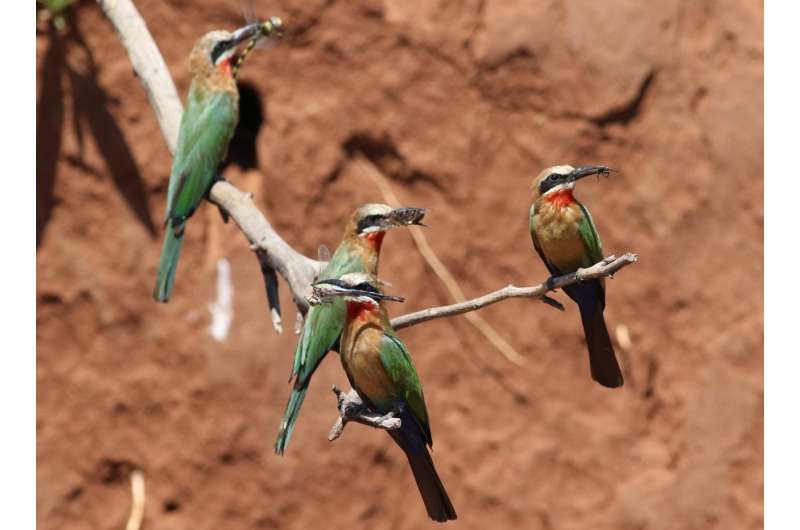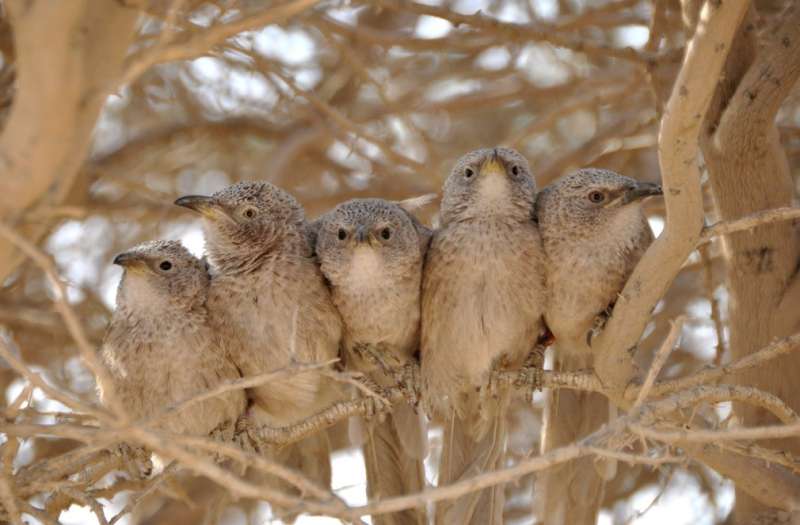Blood ties fuel cooperation among species, not survival instinct

Cooperative breeding, when adults in a group team up to care for offspring, is not a survival strategy for animals living in extreme environments. It is instead a natural result of monogamous relationships reinforcing stronger genetic bonds in family groups. Siblings with full biological ties are more likely than others to stay with their family and help day to day, a new Oxford University study has found.
Previous research showed that animals that breed in this way are more likely to live in harsher climates, such as deserts, than those who go it alone. Without any evidence for why this happens, scientists drew the intuitive conclusion that team thinking was at play, and larger family structures were formed as a survival strategy.
However, the new findings from Oxford's Department of Zoology have turned these previous conclusions on their head, proving that communal family dynamics are often built before animals enter difficult climates, and that the two are actually not related.
From observing 4,707 bird species, the team collated and analysed data to test competing explanations for how much environmental conditions influence and drive species' decision to live communally. These potential explanations included: entering harsh environments in a large family group offers stronger chances of survival than as an individual; there is in fact no relationship between the two at all; and that a third variable may be at play, such as female polyandry, when the mother has multiple partners.
The study found that parental relationships - specifically whether they were polyandrous or monogamous plays a key role in whether animal families stay together as a group or not.

A cooperative living structure was more likely to be favoured when both parental genes were shared by siblings, a trait known as "kin selection." Bolstered by this dynamic the groups are then able to enter difficult climates, and set up home in new territories, that they may not have been able to survive in alone.
The research was conducted in partnership with the University of Lund, Sweden, Columbia University, USA and Washington University, St Louis, USA. The full study features in the journal Nature Ecology & Evolution.
Professor Ashleigh Griffin, Research Fellow in the Department of Zoology and co-author of the study said: "For decades, biologists have noted that animals living in harsh desert environments often live in cooperative groups. This seems to make intuitive sense - when times are hard, it may take teamwork to survive. We tested this hypothesis in an analysis of over 2,000 species of birds, looking at whether species were cooperative and where they lived. Surprisingly, we found no evidence to support the widely held assumption that species in the desert were more likely to become cooperative. Instead, cooperation evolves as a result of close genetic bonds in family groups. These cooperative family groups are then better able to invade new territory, where the climate is too harsh for uncooperative, solitary species to survive."
While survival is not the reason that animals choose to breed cooperatively, it is a definite advantage in extreme environments like the desert. Species that are known for their familial helping behaviour, such as starlings and meerkats, can live anywhere. Non-cooperative species, such as puffins and penguins, tend to only be found in specific environments.
Professor Griffin added: "Cooperative species are more effective pioneers, able to exploit harsh environments that are too tough for most other species that raise offspring on their own or in pairs."
Journal information: Nature Ecology & Evolution
Provided by University of Oxford



















